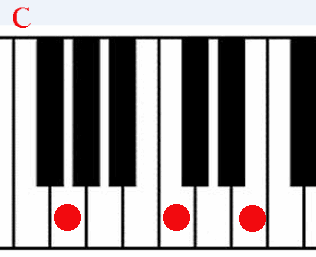
Many electronic keyboard instruments sound the same volume whether their keys are press hard and long or soft and briefly. Their keys make electrical connections instead of mechanical connections. They do not have hammer-action keys which sound louder when pressed harder, or softer when pressed lightly. Before the days of electronic pianos, most pianos could be played loudly or softly because they had hammer-action keys. Pianoforte means soft and loud. Some electric pianos do work with a kind of hammer-action, but not when they are played as organs.

Dynamics in music is playing softly and loudly. Without hammer-action keys, players of electronic organs, pianos and other keyboard instruments still need to play dynamically, louder and softer.
Many manual pianos and electronic keyboards have loud keys in some octaves and soft keys in other octaves. Bass octaves are often loud and the highest treble octaves are often much softer. The highest notes are often too soft to be heard above the bass notes. If the volume of the instrument is turned up louder so that high notes can be heard, then the bass notes become much too loud.
Some electric keyboards may have a choice of registrations which allows higher melody notes to be played louder than lower harmony chords. Some keyboards have more than one volume control, perhaps one for keys below note middle C and another for notes above middle C, or even a different volume control for each octave.
Two keyboards can be played together, one controlling the volume of the bass chords and the other the volume of the treble notes.
The following instructions and exercises teach a method of playing keyboard musical instruments that enables better harmony between bass chords and treble notes, between the left and and the right hand.
Play chords on the bass notes of the first and second octave and meloody notes higher up the keyboard on the second, third and fourth octaves. That separation helps to keep the chords from smothering the melody.
Notes in the drawings below are not meant to be in any octave or cleft. They are just to show the duraction of the chord. Any chord can be played. Beginners can play triad chords C with second position fingering and G with first position fingering, using fingers 5, 2 and thumb of the left hand.
In these drawings which illustrate the exercises, each note signifies a chord and the duration of that chord. The first drawing shows four 1/8th notes to represent any chord being played for four beats in the bar in 4/4 time. The notes are separated by four 1/8th silences to make up the count of four quarter notes. That is four pulses to a measure.

Count 1, 2, 3, 4, 1, 2, 3, 4. and so on. Here the pulse is shortened from a quarter note to an eighth to indicate a softened chord. That pulse can be turned into a rhythm by by playing a silence instead of one of the notes, like this.

Brief or staccato chords are often played by jazz pianists. Here two rhythms are softened by changing the second or third pulse into two 1/16th notes.


Where their is a pause or sustained note in the melody, a chord of a quarter duration can be played. Here a quarter note is played for the first pulse then for the third pulse. The word "pulse" is favoured because many people use the word "beat" to also mean rhythm.


Full block chords, triads of duplets can be played with the left hand or both hands to begin a piece of music, during an instrumental improvisation in the middle of a piece or at the end. Think of each measure being made up of even pulses, say four pulses of a quarter duration in 4/4 time or measure.

Then vary the duration to make a rhythm. Here two quarter chords are replaced by one half chord.


Here one quarter chord is replaced by two eighth chords.

When a pianist finished playing a solo piece with longer and louder chords and notes, he can change back to playing briefer chords and silences to accompany musicians playing other instruments.
Practise playing the rhythms above.